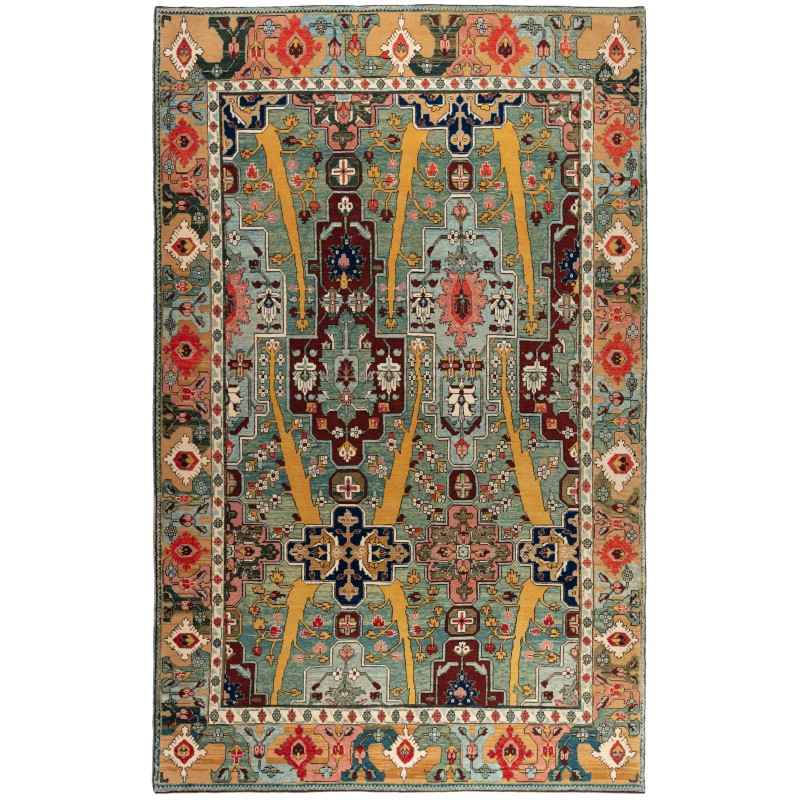
- Stock: In Stock
- Model: C50315
- サイズ: 200cm x 319cm
この絨毯の情報は、E. Heinrich Kirchheimによる『Orient Star - A Carpet Collection』、Hali Publications Ltd、1993年の64番およびJoseph V. McMullanによる『Islamic Carpets』、Near Eastern Art Research Center Inc.、ニューヨーク、1965年の26番からのものです。これはペルシャ東部のホラーサン地域で作られた17世紀のコンパートメントとツリーデザインの絨毯です。この絨毯の名前は、ジェノヴァのピエロ・バルビエリの所有地に由来しています。この絨毯の基本的なデザインは非常にシンプルです。フィールドは、小さな多重葉のメダリオンと大きな逆のカルトゥーシュの交互の列で構成されています。メダリオンは幅と色で交互に配置され、より広いメダリオンからは2種類の木が4本生えており、フィールドの大部分を占めています。メダリオンとカルトゥーシュの両方にはパルメットの模様が施されています。ボーダーパターンは非常にシンプルで、それぞれがダイヤモンド形のバラのリピートデザインを表示し、非常に重い、分かれたアラベスクが生えています。このタイプの絨毯は、北部のペルシャから来た可能性があります。なぜなら、16世紀の北西ペルシャの絨毯よりもボーダーデザインがより優雅ではないからです。当社のデザイナーによって絨毯のデザインが解釈され、鮮やかな色がこの絨毯に選ばれました。
The source of carpet comes from the book Orient Star – A Carpet Collection, E. Heinrich Kirchheim, Hali Publications Ltd, 1993 nr.64 and Islamic Carpets, Joseph V. McMullan, Near Eastern Art Research Center Inc., New York 1965 nr.26. This is a long Khorassan Compartment and tree design 17th-century carpet from Khorasan, Eastern Persia. The name of this carpet comes from the provenance of Piero Barbieri, Genoa. The basic design of this rug is essentially quite simple. The field is organized by alternate rows of smaller multilobed medallions and larger reciprocal cartouches. The medallions alternate in width and color, and from the wider ones, four trees of two species grow, filling most of the field. Both the medallions and the cartouches are decorated with palmette patterns. The border pattern is unusually simple, consisting of separate units, each of which displays a repeat design of diamond-shaped rosettes from which spring very heavy, forked arabesques. It seems that carpets of this type might have come from Northern Persia rather than the Northwest since the border design is less elegant than in those of the 16th-century Northwest Persian rugs from which it was derived. The design of the rug is interpreted by our designers, and vivid colors are chosen for this carpet.
